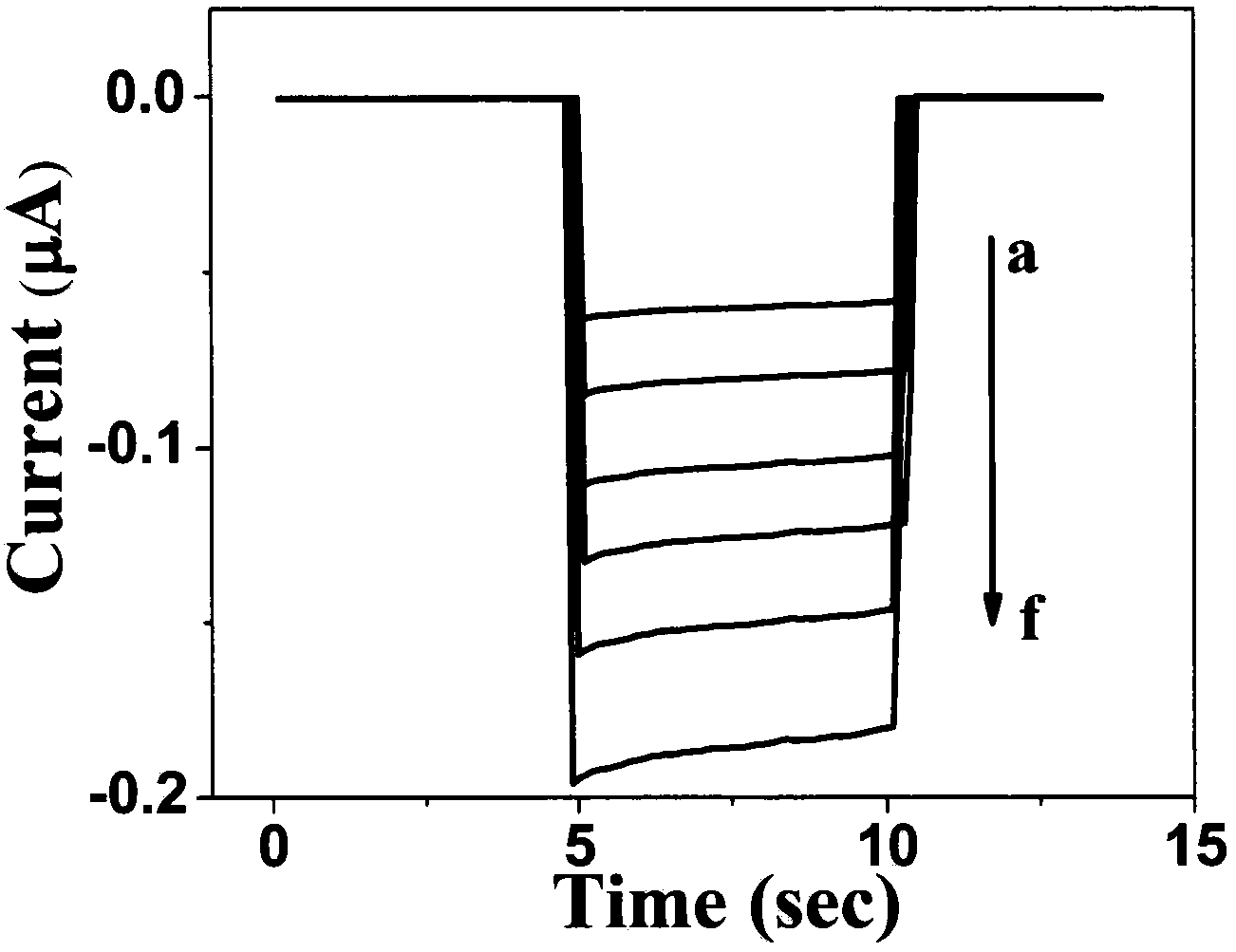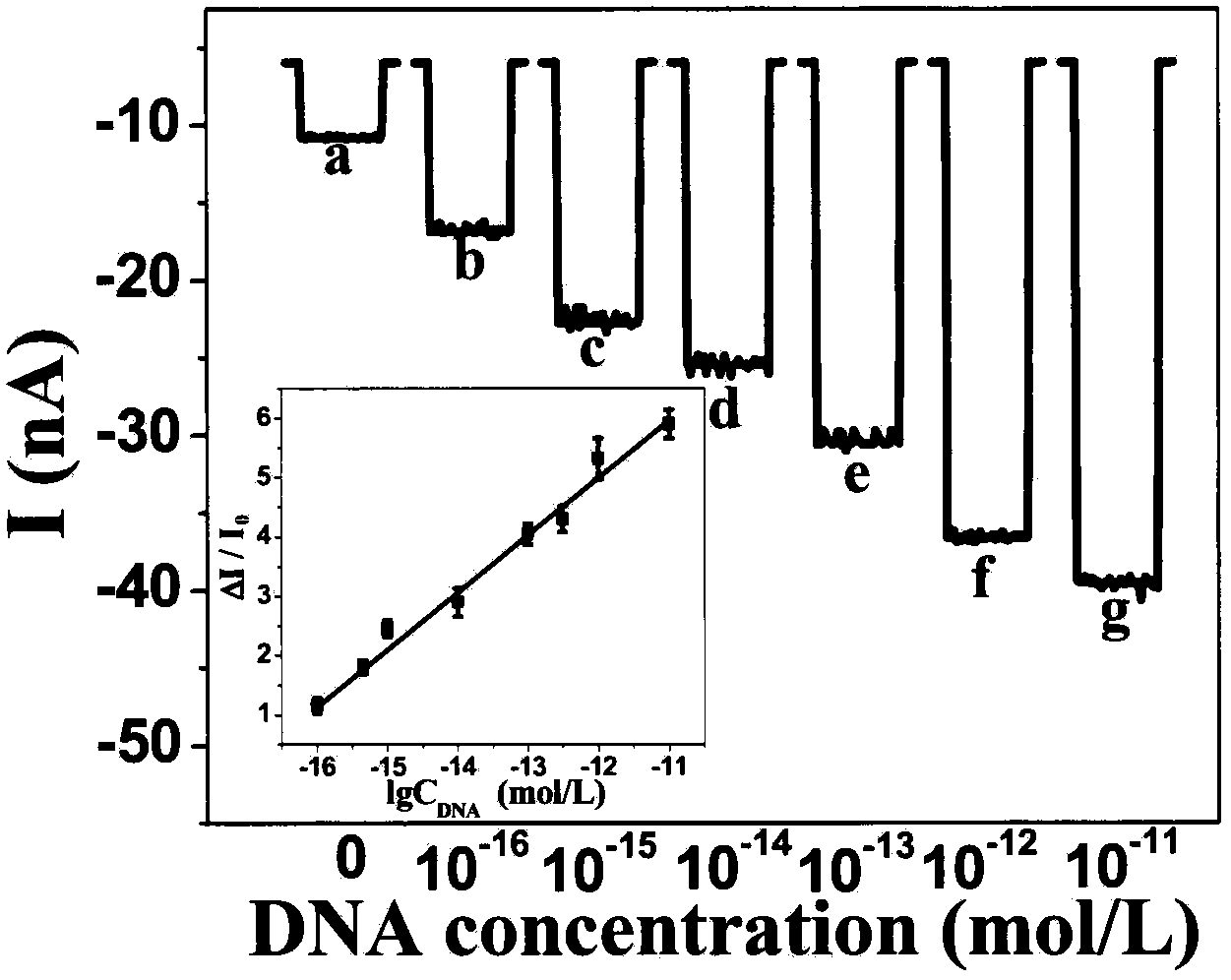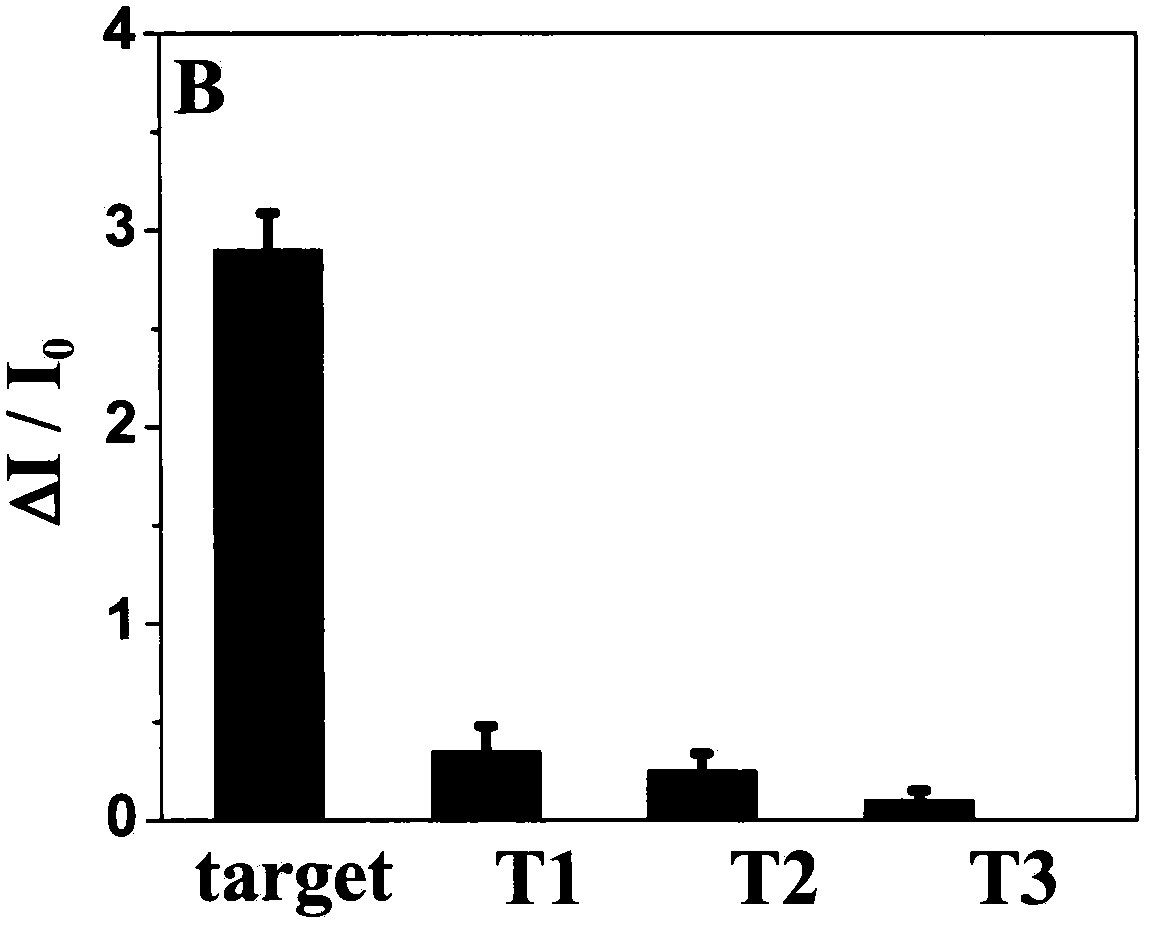Multifunctional photoelectrochemical sensor based on G-tetrahedron/hemin
A photoelectrochemical, tetrahedral technology, applied in the direction of material electrochemical variables, etc.
- Summary
- Abstract
- Description
- Claims
- Application Information
AI Technical Summary
Problems solved by technology
Method used
Image
Examples
Embodiment 1
[0021] a, in containing 0.045mmol cysteine, 0.015mmol mercaptohexanol solution and 0.015mmol Pb(CH 3 COO) 2 In the solution, add 1mol / L NaOH solution to adjust the pH of the solution to 9. After passing through high-purity nitrogen for 30 minutes, add 15mL of 0.01mol / L NaHSe aqueous solution, continue to pass through nitrogen and stir at 60 degrees for 2 hours to obtain water-soluble PbSe quantum dots;
[0022] b. Immerse the pretreated ITO glass sheet in a solution of 2% PDDA polymer containing 0.1mmol / L NaCl, rinse the electrode surface with deionized water after 10 minutes; then immerse it in the water-soluble PbSe quantum dot solution After 10 minutes, rinse the electrode surface with deionized water. The above steps can modify the PbSe quantum dots on the ITO electrode.
[0023] c. Immerse the PbSe quantum dot modified electrode in 1mL aqueous solution containing 20mg EDS and 10mg NHS to react for 1 hour, and then use the cleaning solution (0.01mol / L Tris-HCl buffer so...
Embodiment 2
[0026] a, 17μL thioglycolic acid, 0.01mmol mercaptohexanol solution and 0.015mmol Pb(CH 3 COO) 2 After the solution is mixed, add 1mol / L NaOH solution to adjust the pH of the solution to 11, and after feeding high-purity nitrogen for 30min, add 20mL 0.01mol / L NaOH solution 2 S aqueous solution, continue stirring and reacting at 90 degrees under nitrogen gas for 4 hours, to obtain water-soluble PbS quantum dots;
[0027] b. Immerse the pretreated ITO glass sheet in a solution of 2% PDDA polymer containing 0.1mmol / L NaCl, rinse the electrode surface with deionized water after 10 minutes; then immerse it in the water-soluble PbS quantum dot solution After 10 minutes, rinse the electrode surface with deionized water. The above steps can modify the PbS quantum dots on the ITO electrode.
[0028] c. Immerse the PbS quantum dot modified electrode in 1mL aqueous solution containing 20mg EDS and 10mg NHS to react for 1 hour, and then use the cleaning solution (0.01mol / L Tris-HCl buf...
PUM
 Login to View More
Login to View More Abstract
Description
Claims
Application Information
 Login to View More
Login to View More - R&D
- Intellectual Property
- Life Sciences
- Materials
- Tech Scout
- Unparalleled Data Quality
- Higher Quality Content
- 60% Fewer Hallucinations
Browse by: Latest US Patents, China's latest patents, Technical Efficacy Thesaurus, Application Domain, Technology Topic, Popular Technical Reports.
© 2025 PatSnap. All rights reserved.Legal|Privacy policy|Modern Slavery Act Transparency Statement|Sitemap|About US| Contact US: help@patsnap.com



